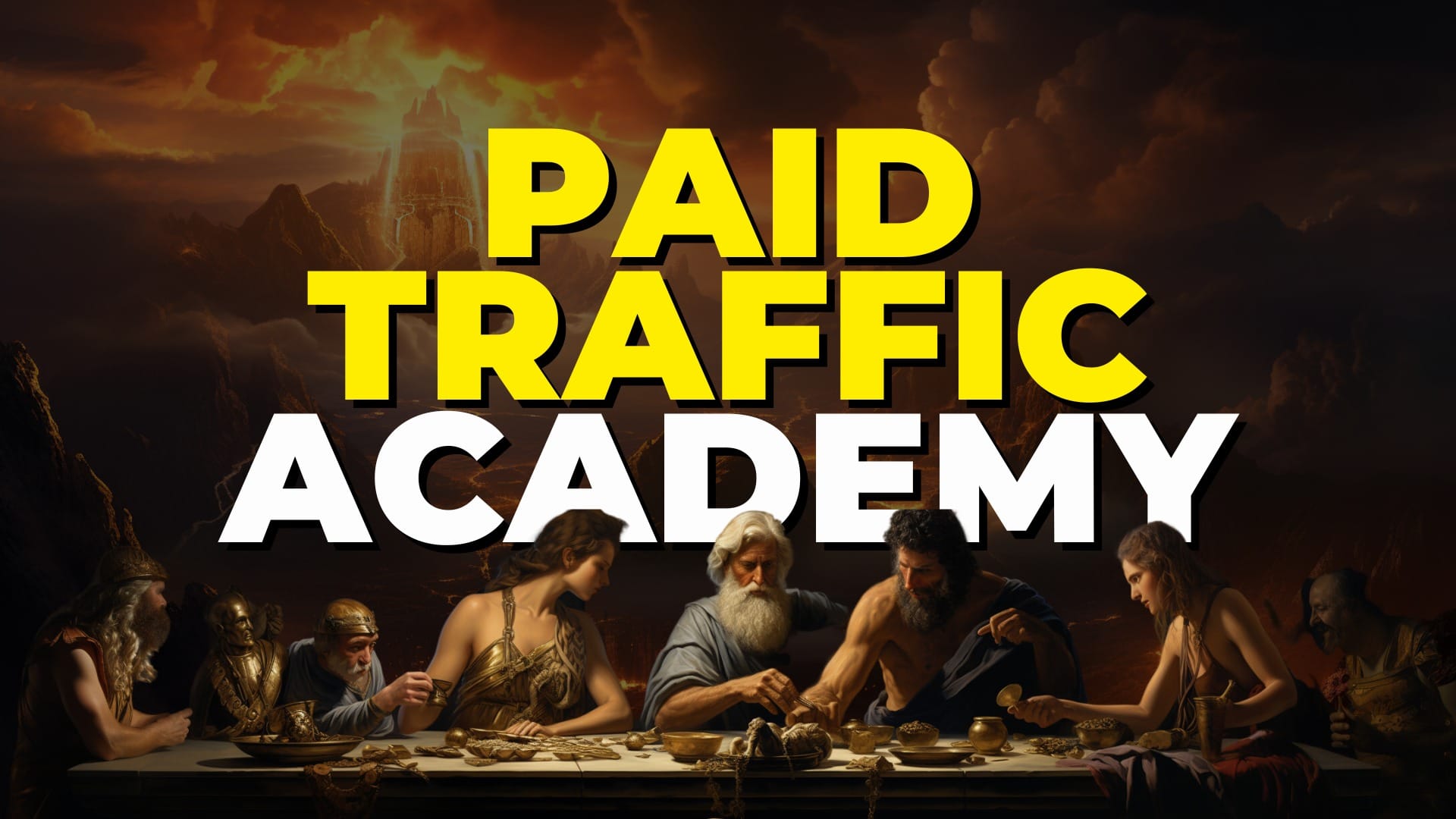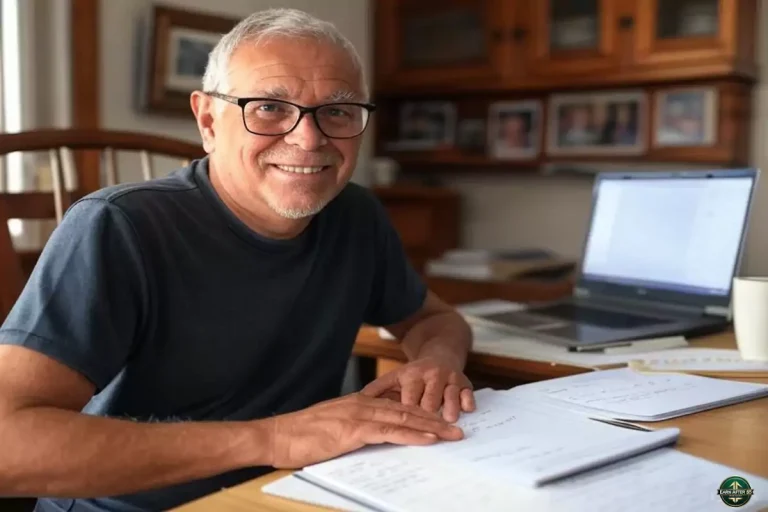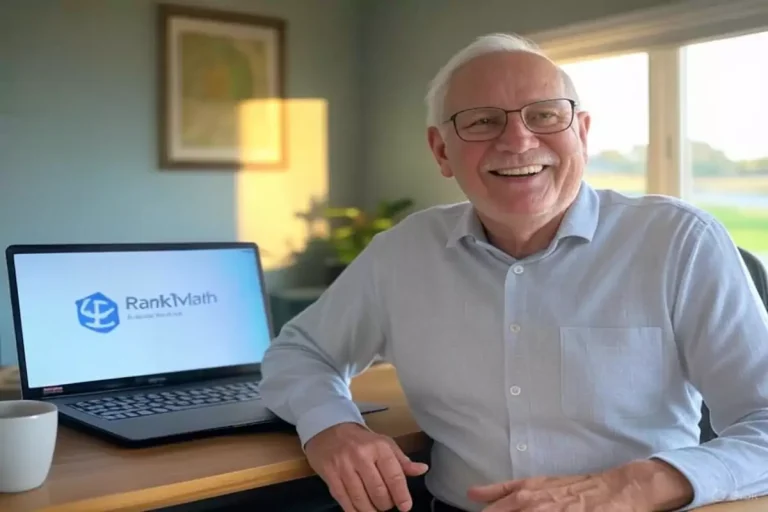Affiliate Marketing Without a Website in 2025: A Step-by-Step Guide for Retirees
Affiliate marketing without a website is a fantastic way for retirees to earn extra income in 2025 without needing tech skills or a big budget. You don’t need to be a computer whiz or spend hours building a site—there are plenty of low-cost, low-risk ways to get started using platforms you already know, like email, social media, or even YouTube.
This guide is designed to inspire you, showing you how to turn your experience, passions, and skills into a rewarding side hustle, all while being realistic about challenges like limited energy or tech know-how. Let’s dive into how you can start affiliate marketing without a website and build confidence along the way!
Here’s what we’ll cover—feel free to jump to the sections that interest you most:
Table of Contents
Why Affiliate Marketing Without a Website Is Perfect for Retirees
Retirement is your chance to explore new opportunities, and affiliate marketing without a website is a low-stress, flexible way to do just that. Here’s why it’s ideal for retirees:
- Boost Your Income: Earn extra money to supplement your retirement savings or cover unexpected expenses, all from the comfort of home.
- Stay Active and Engaged: Keep your mind sharp by learning new skills and connecting with others online.
- Pursue Your Passions: Share your expertise or hobbies—whether it’s gardening, travel, or cooking—and get paid for it.
- Low Risk, Low Cost: You don’t need to invest in a website, tech tools, or inventory, making it perfect for retirees on a budget.
Take Susan, for example. At 68, she started sharing gardening tips on her Facebook page, linking to affiliate products like gardening tools and seeds. With just a few posts a week, she now earns $400 a month—enough to cover her utilities and enjoy a few extra treats. Stories like Susan’s show that affiliate marketing without a website is not only possible but also rewarding, especially for retirees.
What Is Affiliate Marketing, and How Does It Work Without a Website?
Affiliate marketing is a way to earn money by promoting products or services from companies you trust. When someone buys through your unique affiliate link, you earn a commission. Traditionally, affiliates use websites to share these links, but in 2025, you can start affiliate marketing without a website by using platforms like social media, email, or video channels.
Here’s how it works without a website:
- Join an Affiliate Program: Sign up with a company that offers affiliate marketing opportunities, like Amazon Associates or ShareASale.
- Get Your Affiliate Link: You’ll receive a unique link to track your referrals.
- Share Your Link: Promote the link on platforms you already use, like Facebook, YouTube, or email newsletters.
- Earn Commissions: When someone clicks your link and makes a purchase, you get paid a percentage of the sale.
The best part? You don’t need to handle products, shipping, or customer service—the company takes care of all that. For retirees, this means you can focus on sharing what you love without the stress of running a full business.
Pro Tip: Use a Capture Page and a LinkTracker to collect Leads and track clicks
Key Tips for Choosing the Right Affiliate Programs
Before jumping into affiliate marketing without a website, it’s important to choose programs that fit your skills, interests, and audience. Here are some practical tips to help you pick the best ones:
- Match Your Interests: Promote products you’re passionate about or have experience with. For example, if you love cooking, consider affiliate programs for kitchen gadgets or recipe books.
- Look for High Commissions: Choose programs with good commission rates (e.g., 5% or higher) to maximize your earnings.
- Check Cookie Duration: Some programs offer a “cookie duration” (the time frame you can earn a commission after someone clicks your link). Longer durations (e.g., 30 days) give you more chances to earn.
- Start with Trusted Platforms: Use well-known affiliate networks like Amazon Associates, ShareASale, or ClickBank, which are beginner-friendly and trusted by millions.
- Read the Fine Print: Make sure the program allows promotion without a website (some don’t) and check for minimum payout thresholds or payment methods.
10 Easy Ways to Start Affiliate Marketing Without a Website in 2025
Now, let’s get to the fun part—10 practical, retiree-friendly ways to start affiliate marketing without a website. Each method includes real-life examples and actionable steps to help you get started.
1. Social Media Posts

Social media is a goldmine for affiliate marketing without a website, especially for retirees who already use platforms like Facebook, Instagram, or Pinterest to stay connected.
- Why It Works for Retirees: It’s free, easy to use, and lets you reach friends, family, and online communities.
- Real-Life Example: Linda, 70, shares travel tips on her Facebook page. She posts about travel gear she loves, like lightweight luggage, and includes affiliate links to Amazon products. She earns $300 a month working just a few hours a week.
- How to Get Started:
- Choose a platform you’re comfortable with (e.g., Facebook for connecting with friends, Pinterest for visual ideas).
- Join groups or communities related to your interests (e.g., gardening clubs, travel forums).
- Share helpful tips, reviews, or product recommendations, and include your affiliate link in the post or bio. For example, on Instagram, add links to your bio using tools like Linktree.
- Be transparent—always disclose that you’re using affiliate links (e.g., “This post contains affiliate links, meaning I may earn a small commission at no extra cost to you”).
2. Email Newsletters

If you enjoy writing, email newsletters are a powerful way to share affiliate links without a website. You can build a small email list of friends, family, or like-minded retirees and share recommendations directly.
- Why It Works for Retirees: It’s personal, direct, and doesn’t require tech skills beyond basic email tools.
- Real-Life Example: John, 65, a retired teacher, sends a monthly email newsletter to his former students and colleagues, sharing book recommendations for lifelong learning. He includes affiliate links to books on Amazon and earns $200 a month.
- How to Get Started:
- Use a free email platform like SendSteed or Gmail to create and send newsletters.
- Start by asking friends, family, or community members if they’d like to receive your tips or recommendations.
- Share valuable content (e.g., “Top 5 Gardening Tools for Beginners”) and include your affiliate links naturally within the content.
- Keep emails short and engaging, with a clear call to action (e.g., “Click here to check out this tool”).

3. YouTube Videos
If you enjoy being in front of the camera or creating simple videos, YouTube is a great platform for affiliate marketing without a website. You don’t need to be a pro—simple, helpful videos can attract viewers and earn commissions.
- Why It Works for Retirees: It’s visual, engaging, and lets you share your expertise in a fun way.
- Real-Life Example: Margaret, 67, started a YouTube channel sharing knitting tutorials. She includes affiliate links to knitting needles and yarn in her video descriptions, earning $500 a month after a year.
- How to Get Started:
- Create a free YouTube channel and use your smartphone or webcam to record videos.
- Choose a niche you’re passionate about (e.g., cooking, DIY home repairs, travel tips).
- Make videos that solve problems or offer value (e.g., “How to Choose the Best Knitting Needles for Beginners”).
- Add affiliate links to your video descriptions and mention them in the video (e.g., “Check out the products I recommend in the description below”).
- Promote your videos on social media or community groups to grow your audience.
4. Online Forums and Communities
Online forums and communities, like Reddit or niche-specific groups, are great places to share affiliate links without a website, as long as you follow their rules.
- Why It Works for Retirees: It’s a way to connect with people who share your interests and offer helpful advice.
- Real-Life Example: Bob, 66, is active in a fishing forum on Reddit. When someone asks for rod recommendations, he shares his experience and includes an affiliate link to a trusted brand, earning $150 a month.
- How to Get Started:
- Join forums or groups related to your niche (e.g., Reddit’s r/gardening, r/travel, or hobby-specific forums).
- Be an active, helpful member by answering questions or sharing tips—don’t just spam links.
- Include affiliate links only when relevant and allowed (check the forum’s rules).
- Always disclose that you’re using affiliate links to build trust.
5. Ebooks or Digital Guides
If you love writing, creating a simple ebook or digital guide is a low-cost way to share affiliate links without a website. You can sell or give away your guide and include links inside.
- Why It Works for Retirees: It’s a one-time project that can generate ongoing income, and it leverages your expertise.
- Real-Life Example: Carol, 69, wrote a short ebook, “10 Easy Recipes for Retirees,” and included affiliate links to kitchen tools on Amazon. She sells it for $5 on Gumroad and earns $600 a month between sales and commissions.
- How to Get Started:
- Choose a topic you know well (e.g., “Budget Travel Tips for Retirees”).
- Use free tools like Google Docs or Canva to create your ebook.
- Include affiliate links naturally within the content (e.g., “I recommend this lightweight suitcase—click here to check it out”).
- Sell your ebook on platforms like Gumroad or share it for free on social media to build an audience.
6. Podcasts
If you enjoy speaking and sharing stories, starting a podcast is a fun way to do affiliate marketing without a website. You can mention products in your episodes and include links in the show notes.
- Why It Works for Retirees: It’s creative, engaging, and lets you connect with listeners on a personal level.
- Real-Life Example: Richard, 71, hosts a podcast about retirement planning. He recommends financial tools and includes affiliate links in his show notes, earning $400 a month.
- How to Get Started:
- Use a free platform like Anchor to record and publish your podcast.
- Choose a niche you’re passionate about (e.g., health tips, retirement travel).
- Mention products naturally in your episodes (e.g., “I’ve been using this budgeting app—check it out using the link in the show notes”).
- Share your podcast on social media or community groups to grow your audience.
7. Paid Ads
If you have a small budget, running paid ads on platforms like Facebook or Google is a faster way to promote affiliate links without a website, though it requires careful planning to stay profitable.
- Why It Works for Retirees: It’s targeted, letting you reach people most likely to buy, but it’s important to start small to avoid overspending.
- Real-Life Example: Diane, 64, runs Facebook ads promoting a fitness program for seniors. She spends $50 a month on ads and earns $150 in commissions, netting $100 profit.
- How to Get Started:
- Choose a high-converting affiliate product with good commissions (e.g., a fitness program or online course).
- Use a platform like Facebook Ads Manager to create a simple ad with a clear call to action.
- Set a small daily budget (e.g., $5) and target your audience (e.g., retirees interested in fitness).
- Track your results to ensure your earnings exceed your ad spend.
8. Guest Posts on Blogs
If you enjoy writing, contributing guest posts to blogs in your niche is a great way to share affiliate links without a website, as long as the blog allows it.
- Why It Works for Retirees: It’s a low-cost way to reach new audiences and build credibility.
- Real-Life Example: Nancy, 68, writes guest posts for a travel blog, sharing her experiences and including affiliate links to travel insurance. She earns $200 a month.
- How to Get Started:
- Find blogs in your niche that accept guest posts (search for “write for us” + your niche on Google).
- Pitch a helpful article idea (e.g., “Top 5 Travel Tips for Retirees”).
- Include affiliate links naturally in your article, following the blog’s guidelines.
- Always disclose that you’re using affiliate links to maintain trust.
9. Online Courses or Webinars
If you’re comfortable teaching, creating an online course or hosting a webinar is a powerful way to share affiliate links without a website. You can recommend products as part of your teaching.
- Why It Works for Retirees: It leverages your expertise and builds trust with your audience.
- Real-Life Example: Gary, 66, hosts a free webinar on “Budgeting for Retirement” and recommends budgeting software with affiliate links, earning $700 a month.
- How to Get Started:
- Use a free platform like Zoom or Teachable to host your course or webinar.
- Choose a topic you’re knowledgeable about (e.g., gardening, financial planning).
- Include affiliate links in your course materials or webinar slides (e.g., “I recommend this software—click here to try it”).
- Promote your course or webinar on social media or community groups.
10. Local Workshops or Events
If you enjoy meeting people in person, hosting local workshops or events is a unique way to do affiliate marketing without a website. You can share affiliate links via handouts or follow-up emails.
- Why It Works for Retirees: It’s social, fun, and lets you connect with your community.
- Real-Life Example: Ellen, 70, hosts a gardening workshop at her local community center. She shares affiliate links to gardening tools via email follow-ups, earning $250 a month.
- How to Get Started:
- Choose a topic you’re passionate about (e.g., cooking, DIY repairs).
- Partner with local community centers, libraries, or churches to host your event.
- Create simple handouts with your affiliate links or send follow-up emails with recommendations.
- Keep costs low by using free venues or charging a small fee to cover expenses.
Best Affiliate Programs for Retirees Without a Website

To help you get started, here are five beginner-friendly affiliate programs that don’t require a website. Each offers good commissions, long cookie durations, and trusted platforms, making them perfect for retirees.
- Amazon Associates:
- Why It’s Great: Access millions of products, from books to gardening tools, with commissions up to 10%.
- Cookie Duration: 24 hours (but extends to 90 days if items are added to the cart).
- How to Join: Sign up at affiliate-program.amazon.com and start sharing links on social media or email.
- ShareASale:
- Why It’s Great: A network with thousands of merchants, offering products in niches like travel, health, and home goods, with commissions up to 20%.
- Cookie Duration: Varies by merchant (often 30 days).
- How to Join: Sign up at www.shareasale.com and apply to merchants that match your interests.
- ClickBank:
- Why It’s Great: Focuses on digital products like online courses and ebooks, with high commissions (up to 75%).
- Cookie Duration: Varies by product (often 60 days).
- How to Join: Sign up at www.clickbank.com and choose products to promote via email or social media.
- Rakuten Advertising:
- Why It’s Great: Partners with major brands like Walmart and Macy’s, offering commissions up to 10%.
- Cookie Duration: Varies by merchant (often 30 days).
- How to Join: Sign up at www.rakutenadvertising.com and apply to merchants in your niche.
- CJ Affiliate:
- Why It’s Great: Connects you with big brands like Target and Adidas, with commissions up to 15%.
- Cookie Duration: Varies by merchant (often 30 days).
- How to Join: Sign up at www.cj.com and apply to merchants that fit your audience.
- Internet Income System:
- Why It’s Great: Offers a step-by-step training program tailored for beginners, including retirees, to build an online income stream using affiliate marketing, with commissions up to 100% on digital products and tools, no website required.
- Cookie Duration: Lifetime (Hard Coded).
- How to Join: Sign up at the Internet Income System, access free training and affiliate links for promotion via email, social media, or other platforms.
How to Get Started Without Breaking the Bank
Starting affiliate marketing without a website doesn’t have to cost a fortune. Here are some practical steps to launch your side hustle on a retiree-friendly budget:
- Set a Budget: Decide how much you’re comfortable spending—aim for $50–$100 to start, covering basic tools or ads.
- Use Free Tools: Platforms like Canva (for graphics), Mailchimp (for email), and Anchor (for podcasts) are free or low-cost ways to create and share content.
- Leverage Your Network: Tell friends, family, and community members about your affiliate promotions—they can be your first audience and help spread the word.
- Start Small: Test your ideas with one platform (e.g., a Facebook post or email) before scaling up.
- Learn as You Go: Use free resources like the U.S. Small Business Administration (www.sba.gov) or AARP (www.aarp.org) for advice on starting a side hustle.
Common Challenges and How to Overcome Them
Affiliate marketing without a website is rewarding, but it’s not without challenges, especially for retirees. Here’s how to tackle common hurdles:
- Challenge: Limited Tech Skills
- Solution: Stick to platforms you’re comfortable with, like Facebook or email, and use free tutorials on YouTube to learn new tools gradually.
- Challenge: Building an Audience
- Solution: Start with people you know—friends, family, or local groups—and expand slowly by joining online communities or forums.
- Challenge: Low Earnings at First
- Solution: Be patient—focus on providing value and testing different products or platforms. Earnings grow as your audience does.
- Challenge: Staying Motivated
- Solution: Set small, achievable goals (e.g., “Share one post a week”) and celebrate wins, like your first commission, to stay inspired.
Final Thoughts: Taking the First Step
Affiliate marketing without a website in 2025 is a low-risk, retiree-friendly way to earn extra income, stay active, and share your passions. The ideas above are just the beginning—use them as inspiration to create a side hustle that fits your unique skills and goals. Remember, you don’t need to do it all at once. Start small, test the waters, and grow at your own pace. You’ve got this!
What excites you most about affiliate marketing without a website? Take the first step today—whether it’s signing up for an affiliate program, posting on social media, or sending an email to friends. Every small action counts!
Frequently Asked Questions About Affiliate Marketing Without a Website
Q: Do I really need tech skills to do affiliate marketing without a website?
A: No! You can use platforms you already know, like Facebook or email, and learn new tools gradually with free tutorials.
Q: How much money can I make with affiliate marketing without a website?
A: Earnings vary, but retirees often start with $100–$500 a month and can grow to $1,000 or more with time and effort.
Q: What if I don’t have a big audience to start with?
A: Start with friends, family, or local groups, and join online communities to grow your audience slowly.
Q: Are there risks to affiliate marketing without a website?
A: It’s low risk, but be careful not to spam links—focus on providing value and always disclose affiliate links to maintain trust.











